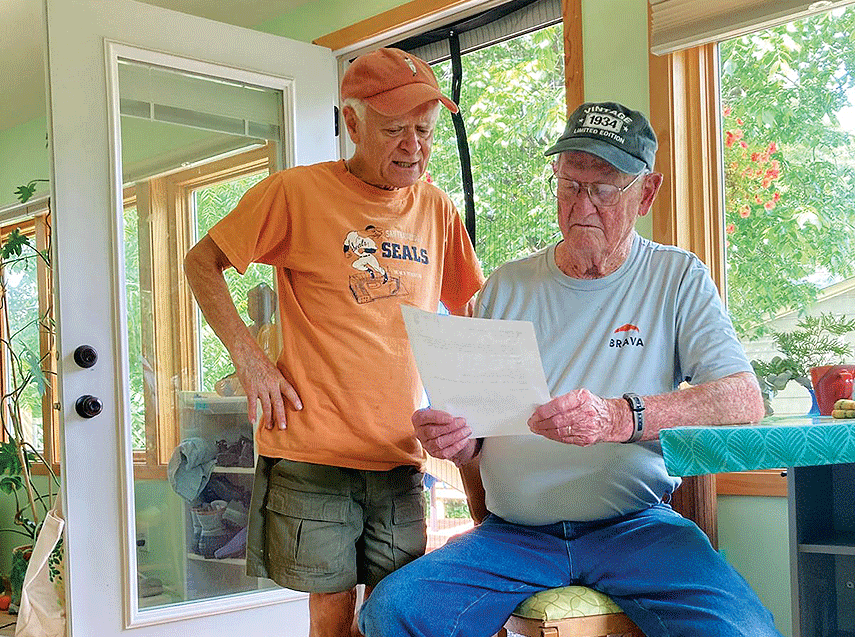
We live in a world where agricultural needs, environmental health, and economic interests often appear to be incompatible. But sometimes it just takes a guy like Ron Blair, driving along a country road and contemplating a string of “what-ifs,” to make a difference.
This is a story about how farmers, community members, and environmentalists found a way to align with the specific needs of the land while maintaining careful attention to economic necessities.
Ron is a member of the Nady Conservation Committee (NCC), which protects and restores city-owned land in Fairfield that contains timber, prairie, or water. With Fairfield’s Pleasant Lake in mind, Ron formulated two questions. One, what if Pleasant Lake wasn’t the default recipient of irrigation and soil runoff from a few neighboring farms? And two, what if there was a way to manage the runoff with the landowners’ full support?
According to the Environmental Protection Agency, over 70 percent of river and stream pollution in the U.S. is linked to agricultural runoff. So why don’t more farmers address this challenge directly? Well, they’re undoubtedly too busy 99 percent of the time taking care of necessary chores. Or they’re wary of the governmental red tape that comes along with federal programs.
Maybe those same farmers don’t know about the studies that show farms implementing well-designed methods can see a 30 percent increase in soil retention and a 20 percent boost in productivity. Experience has proven that by prioritizing ecological health for their land, farmers are making the most practical investments in their land’s long-term prosperity.
Lucky Introductions
Ron just happened to be talking with one of his many friends who share his action-oriented concern for the environment, and that’s when Stan Simmons’s name was first mentioned to him. It wasn’t too long before Ron called Stan, asking for a meeting. That first meeting was a tour through Jefferson and Washington counties, viewing numerous projects Stan had designed and implemented over many decades, including all the conservation practices in and around Lake Darling in Brighton.
Stan is a fourth-generation Iowan with over 60 years of experience as a water and land management specialist. His reputation is firmly established as the go-to expert who knows whatever needs to be known about agricultural water runoff and soil management. His expertise and enthusiasm for conservation and sustainable agriculture—not to mention his work in 17 other nearby counties over multiple decades—made him the perfect partner to help flesh out innovative solutions for Jefferson County’s local farmers.
Stan’s introductory driving tour presented Ron with a wide-angle lens on how the use of drainage tiles, sediment holding ponds, and tile outlet terraces placed at just the right locations on farmed land capture eroded soil and agricultural chemicals, then filter that runoff—all while preserving the soil from washing away into gulleys, streams, rivers, and lakes.
Knocking on Doors
No project like this can succeed without community buy-in. Even though he’s retired, Stan was more than glad to personally connect with the relevant landowners, many of whom he’d known or worked with for decades.
But how to pay for all of these good intentions? Ron was researching grants to help cover as much of these projects’ costs as possible. The local Natural Resources & Conservation Services (NRCS) office helped Ron identify a source for funding—a Publicly Owned Lakes grant that required only 25 percent investment from landowners. Once the numbers were crunched, every landowner agreed to participate in the grant application.
To be fair, all of these farmers had already made conservation improvements on their land, but the newly proposed changes focus on the water quality at Pleasant Lake for now and the future.
On June 12, the Department of Natural Resources Commissioners announced their unanimous approval of the grant. Beginning in 2026, NRCS will design and engineer the recommended conservation practices.
Collectively, the projects will save the three landowners from losing over 200 tons of top soil per year—water and soil that would eventually have found their way into Pleasant Lake. Talk about a win (landowners), win (lake water quality), win (city and residents)!
This project has the support of the local Soil and Water Conservation Board and the City of Fairfield. The Nady Conservation Committee has made great strides in helping to improve several city- and state-owned green spaces and prides itself on partnering with experienced and thoughtful people such as Stan Simmons.
J.A. Blanca is a professional landscape designer with a penchant for conservation practices.
